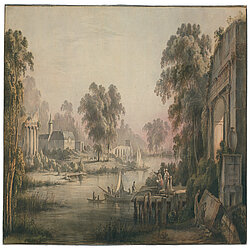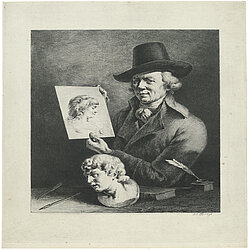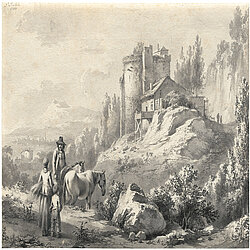Loading the page ...
Jean-Jacques de Boissieu
1736–1810, Lyon
Jean-Jacques de Boissieu, the scion of a noble family from the Auvergne, lived and worked for most of his life in his native city of Lyon. In 1771 he was appointed Trésorier de France, a position which henceforth guaranteed him financial independence. De Boissieu was a wilful person whose wholehearted devotion to his art made him something of a recluse. After studying under the history painter, Charles Frontier, de Boissieu spent the years from 1762 to 1764 in Paris, where he became friends with such leading artists of his time as Joseph Vernet, Johan Georg Wille and Jean-Baptiste Greuze and maintained contacts with patrons and collectors like Pierre-Jean Mariette and Claude-Henri Watelet. Together with his patron, Francois Alexandre Duc de la Rochefoucauld, he went on a Grand Tour of Italy in 1764/65, returning with a rich stock of landscape studies which would serve him as a source of inspiration for the rest of his days. The political upheavals of the French Revolution marked a dramatic turning point in de Boissieu’s life, though, for he lost both his position and his wealth. His artistic career did not suffer, however. He was subsequently active almost exclusively as a draughtsman and etcher, attending himself to the sale of his works, which circulated in a small, select circle of collectors and enthusiasts. Eschewing the prevalent art trends of his time, de Boissieu remained faithful to his own artistic idiom, which is characterised by a close affinity to nature and a subtle grasp of the mood of a landscape.
On Offer

Archive


